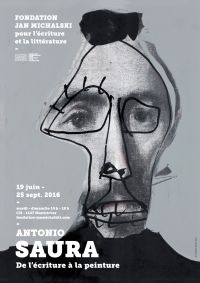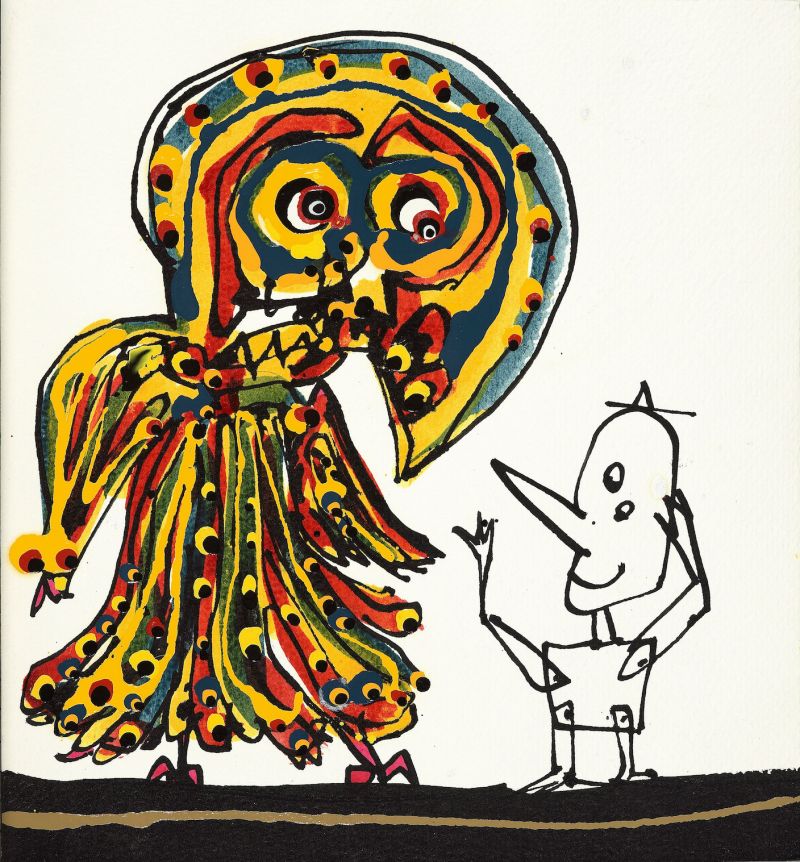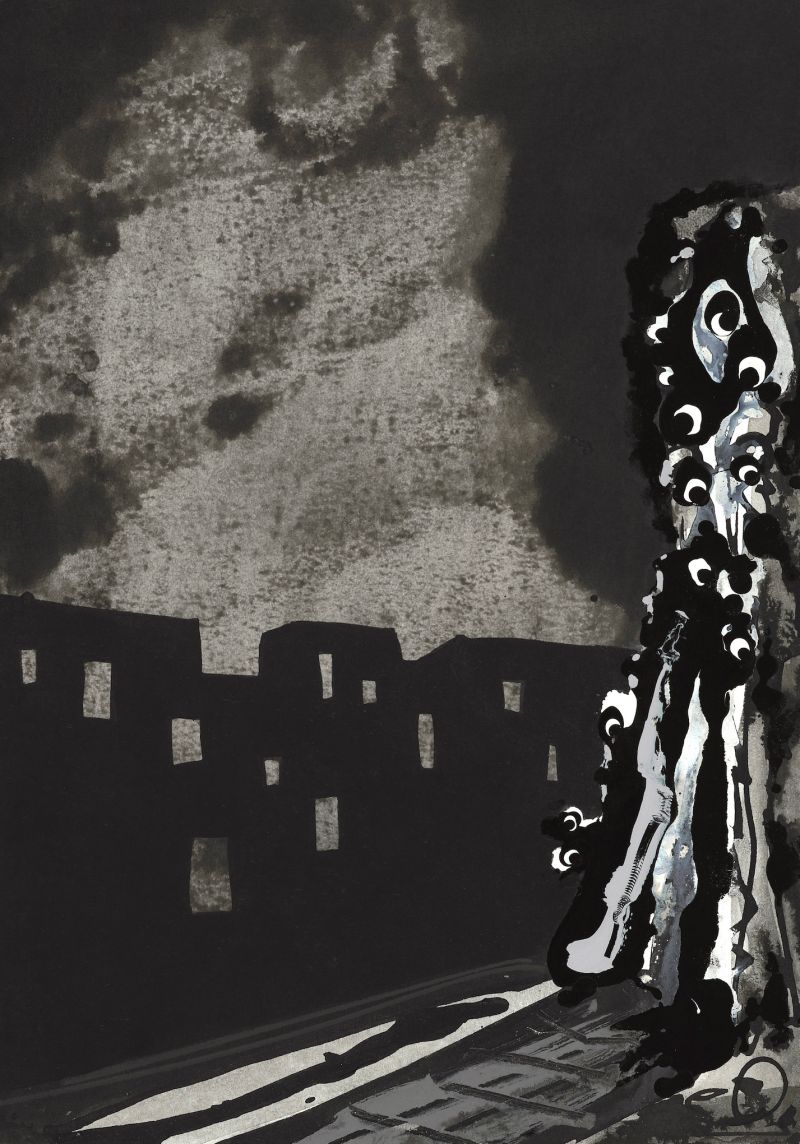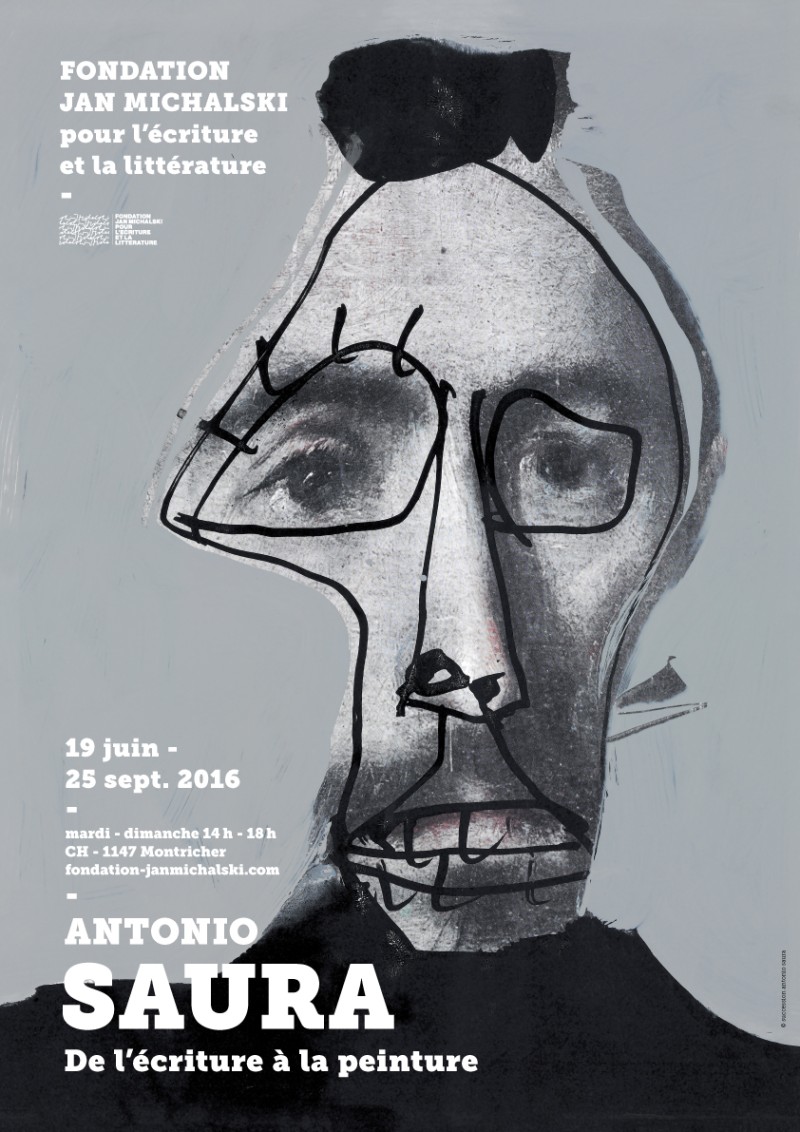
Exposition Antonio Saura
De l’écriture à la peinture
Introduction
Antonio Saura (1930-1998) was a major Spanish artist of the 20th century and an important figure in contemporary art, creating a formidable a body of work that includes painting, illustration, engraving, sculpture, and writing. It is a legacy that is as fertile as it is formally inventive. Today Saura’s work figures in the collections of museums and art institutions around the world.

Illustration pour Don Quijote de la Mancha, Miguel de Cervantès, Galaxia Gutenberg, encre de Chine sur papier, Barcelone 1987 © Succession Antonio Saura
As an adolescent confined to bed because of illness, Saura first discovered the world through books and images, and made his first forays into writing and the visual arts as a self-taught artist. Initially part of the Surrealist movement, he rapidly began to follow his own visual approach marked by lyrical abstraction and the primacy of the gesture in artmaking. Saura is notably one of the founders of the avant-garde group El Paso (1957-1960), which introduced Spain to an informal art in a libertarian spirit in reaction to the noxious climate of Francoism.
The exhibition Antonio Saura │ De l’écriture à la peinture (Antonio Saura │ From Writing to Painting) explores the artist’s many ties with writing, literature, and books. Beginning early in his career and throughout his lifetime, Saura invented imaginary characters and worlds while making art in which portrait plays a preponderant role. Drawing on his immense collection of images from reviews, newspapers, and art books, which were then transformed by succeeding layers of paint, Saura wrote stories visually, without words. Witness the series of Narrations or La Quinta del Sordo, which was created as an “imaginary novel without beginning or end.”
Illustration is one of the main facets of Saura’s oeuvre, given both its extent and its inventiveness and range. His work as an illustrator began in 1963 with a series of etchings and aquatints that accompanied Quevedo’s Dreams. Saura went on to illustrate Cervantes’s Don Quixote de la Mancha, Orwell’s 1984, Kafka’s Diaries, and Christine Nöstlinger’s version of Pinocchio, before tackling his own journal, Nulla dies sine linea, which is constructed like a story and draws on striking press commentary that is full of imagery.

Illustration pour Las aventuras de Pinocho de Carlo Collodi contadas de nuevo por Christine Nöstlinger, peinture laque, gouache et encre de Chine sur papier, Barcelone, 1994 © Succession Antonio Saura

« Miles de manifestantes remachan la huelga general en la Puerta del Sol », gouache, encre de Chine et mine de plomb sur papier, El País, janvier 1994 © Succession Antonio Saura
Thanks to their esthetics, books formed for Saura a space for formal play and a material support for his art. In his Autodafé (Auto-da-fé) series, he took over the inside cover of works in which painted faces open out where pages have been ripped from the book.
Through a selection of paintings, works on paper, and prints, along with books designed by the artist that exist as editions of one, the exhibition allows visitors to see – and imagine along with the artist – visual fictions peopled with figures that display a wonderful expressive range. Do they tell us, echoing a remark by Antonio Saura himself, that “whatever the painter produces is in any case a self-portrait”?

Illustration pour 1984, George Orwell, Galaxia Gutenberg, gouache, peinture laque, lavis et encre de Chine sur papier, Barcelone, 1998 © Succession Antonio Saura
Curatorship
Natalia Granero, Fondation Jan Michalski
Olivier Weber-Caflisch, fondation archives antonio saura
Partnership
In partnership with
The Antonio Saura foundation archives
www.antoniosaura.org
Programme
Visites commentées de l'exposition
Dimanche 17 juillet à 14h, par les commissaires d’exposition
Samedi 3 septembre à 14h, par les commissaires d’exposition
Samedi 24 septembre à 14h, par les commissaires d’exposition
Moments famille
Des rendez-vous pour partager avec les enfants une visite ludique de l’exposition et des ateliers créatifs.
Mercredi 31 août à 15h
Mercredi 21 septembre à 15h


